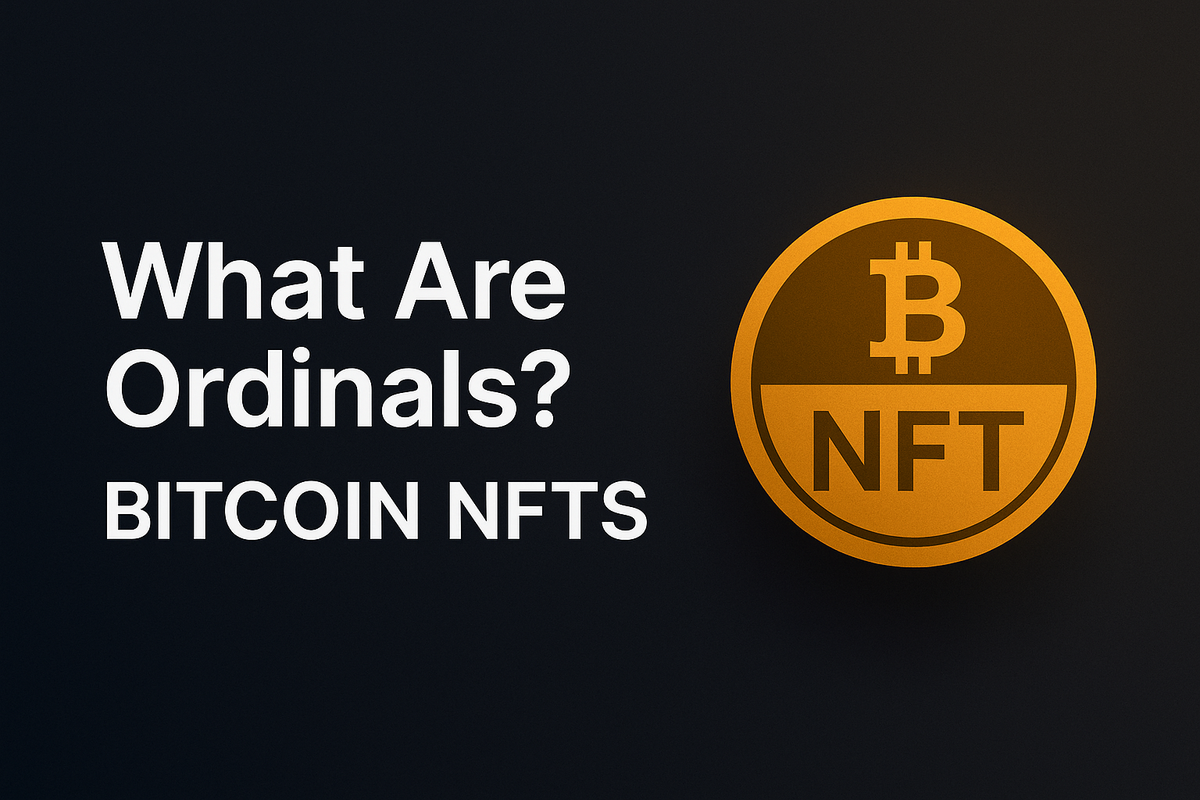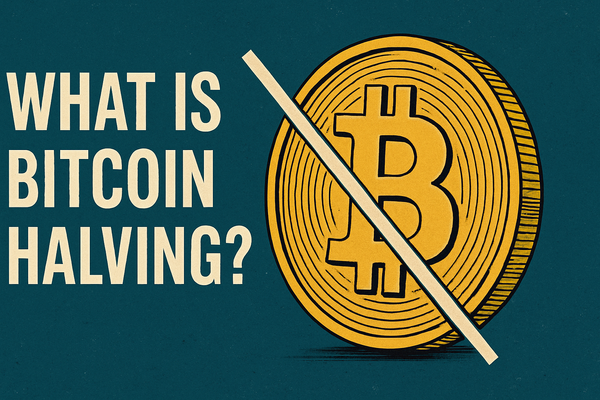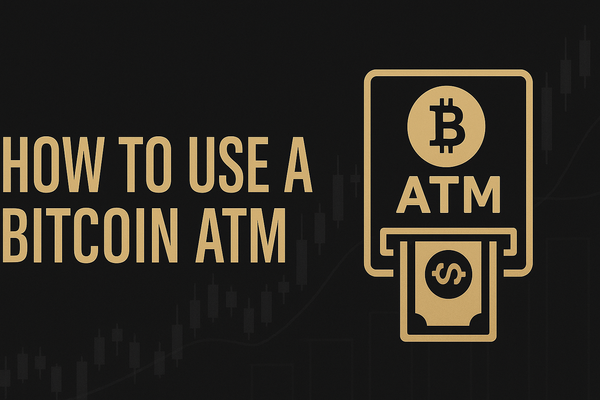What Are Ordinals? Bitcoin NFTs Explained Simply
Bitcoin Ordinals bring NFTs to the Bitcoin blockchain. Learn what they are, how they work, and why they're changing how we think about Bitcoin.

NFTs, or non-fungible tokens, have become a defining feature of Web3, with Ethereum historically serving as their primary home. However, a new innovation has emerged within the Bitcoin ecosystem—Ordinals. These are essentially Bitcoin-native NFTs, enabling users to inscribe data like images or text directly onto individual satoshis, the smallest unit of Bitcoin.
This groundbreaking approach challenges the long-held view that Bitcoin is only useful as "digital gold." In this article, we'll explore what Ordinals are, how they work, why they matter, and how they compare to traditional NFTs. Whether you're an investor, developer, or simply curious, this guide will help you understand Bitcoin NFTs and their growing role in the crypto landscape.
Understanding Ordinals
Ordinals are a new protocol that brings NFT-like functionality to the Bitcoin blockchain. The core idea is simple yet powerful: by assigning a unique number (an "ordinal") to each satoshi, users can track and modify individual units of Bitcoin. This numbering system is based on the order in which satoshis are mined and transferred.
What makes Ordinals stand out is the concept of inscriptions. Inscriptions allow users to attach arbitrary data—such as images, text, or even small applications—directly onto a satoshi. This transforms it into a one-of-a-kind digital artifact stored permanently on-chain.
Unlike traditional NFTs that depend on smart contracts and off-chain metadata, Bitcoin Ordinals are fully self-contained. They require no external links or dependencies. This distinction provides a higher level of permanence and decentralization, aligning more closely with Bitcoin’s original ethos.
Ordinals open the door to new types of digital expression and utility, all without altering Bitcoin’s core protocol.
The Mechanics of Ordinals
To understand how Ordinals work, you first need to know how Bitcoin transactions function. Every satoshi—one hundred millionth of a bitcoin—is fungible and indistinguishable by default. The Ordinals protocol changes that by introducing a way to track individual satoshis through a process called ordinal theory, which assigns each sat a serial number based on its mining and transfer history.
Once a satoshi has an ordinal, it can be “inscribed” with data. This inscription is added using Bitcoin’s Taproot upgrade, which made it possible to embed more complex data into transaction scripts without altering the core Bitcoin protocol. Through this method, users can embed digital artifacts like images, HTML, or code directly into the blockchain.
The result is an NFT-like asset—fully on-chain, immutable, and secured by the Bitcoin network. This differs from Ethereum NFTs, which often rely on external storage solutions like IPFS or centralized servers.
Because no smart contracts are needed, Ordinals maintain Bitcoin’s minimalism while enabling a new layer of functionality. They represent a novel blend of art, data, and finance directly encoded into the Bitcoin ledger.
Benefits of Bitcoin Ordinals
Bitcoin Ordinals offer a range of advantages that set them apart from traditional NFTs. Most notably, inscriptions are stored entirely on-chain, ensuring permanence and resistance to censorship. This makes them less reliant on third-party storage or metadata links that can break over time.
Security is another key benefit. Because Ordinals live directly on the Bitcoin blockchain, they inherit Bitcoin’s robust infrastructure, including its decentralized nature and unmatched network hash rate. This gives Ordinals a level of immutability and longevity that few other NFT platforms can match.
Ordinals also introduce new creative and financial possibilities. Artists, developers, and collectors can leverage the Bitcoin network for digital artifacts, tapping into its reputation as the most secure and longest-running blockchain. This could broaden Bitcoin’s utility and drive new forms of cultural and economic engagement within the ecosystem.
Challenges and Criticisms
Despite their innovation, Bitcoin Ordinals have sparked significant debate. One major concern is block space usage. Since inscriptions store data directly on-chain, they can increase the size of Bitcoin blocks, potentially driving up transaction fees and making it more expensive to use the network for standard payments.
Critics also argue that Ordinals deviate from Bitcoin’s original purpose as a peer-to-peer cash system. Some believe using the blockchain for NFTs dilutes its focus and could lead to bloat and inefficiencies.
There are also environmental implications to consider. As interest in Ordinals grows, the increased transaction volume may add to Bitcoin’s already high energy consumption, raising concerns among sustainability advocates.
These challenges highlight the tension between innovation and Bitcoin’s foundational principles. Whether Ordinals are a value-add or a distraction remains a hot topic within the community.
How to Create and Trade Ordinals
Creating an Ordinal begins with acquiring a Bitcoin wallet that supports Taproot addresses. Popular options include wallets like Xverse and Hiro Wallet, both designed to handle Ordinal inscriptions. Once set up, users can send a small amount of Bitcoin to their wallet to cover transaction and inscription fees.
The next step is inscribing a satoshi. Platforms like Gamma.io and OrdinalsBot allow users to upload an image, text, or file, and then inscribe it onto a satoshi through an easy-to-use interface. The inscription process involves embedding the chosen data directly into a Bitcoin transaction, which then gets recorded permanently on the blockchain.
Once minted, Ordinals can be traded just like traditional NFTs. Marketplaces such as Magic Eden’s Bitcoin section and Ordinal Market have emerged to facilitate buying, selling, and listing of these assets.
It’s important to note that transactions involving Ordinals may carry higher fees, and users must exercise caution when transferring these assets to avoid accidental loss. Specialized wallets help ensure that Ordinals remain attached to the intended satoshi without fragmentation.
Thanks to these evolving tools, participation in the Bitcoin NFT ecosystem is becoming increasingly accessible to everyday users.
The Future of Ordinals
The future of Bitcoin Ordinals looks promising but uncertain. As tools and marketplaces mature, we can expect more creators, collectors, and developers to explore the possibilities offered by Bitcoin-native NFTs. New applications, such as on-chain games and decentralized identity systems, may emerge as the technology evolves.
However, Ordinals must overcome ongoing debates about scalability, fees, and Bitcoin’s core mission. Their success will likely depend on how the Bitcoin community balances innovation with preservation of the network’s original values.
Regardless of the challenges, Ordinals have already proven that Bitcoin can be more than just a store of value—it can also be a platform for digital expression and ownership.
What Are Ordinals? Bitcoin NFTs FAQ
Bitcoin Ordinals are a way to assign individual identities to satoshis, allowing users to create NFTs directly on the Bitcoin blockchain.
Ordinals store all data directly on-chain, while many Ethereum NFTs depend on external links or metadata, making Ordinals more permanent.
An inscription is the process of embedding data, like images or text, onto a single satoshi, turning it into a unique digital artifact.
Yes, you can trade Bitcoin Ordinals through marketplaces and wallets that support inscriptions, such as Magic Eden and Ordinals Market.
Risks include higher Bitcoin transaction fees, potential blockchain bloat, and the need for specialized wallets to manage Ordinal assets safely.
Conclusion
Bitcoin Ordinals represent a fascinating evolution in the crypto world. By enabling NFTs directly on Bitcoin’s blockchain, they challenge traditional assumptions about what Bitcoin can and should be used for. Unlike Ethereum-based NFTs, Ordinals offer greater permanence and security by embedding all data on-chain.
While debates about scalability and purpose continue, there’s no denying that Ordinals have opened new creative and financial opportunities. Whether they become a lasting feature of Bitcoin or remain a niche innovation, they have already made a significant impact on the blockchain landscape.





